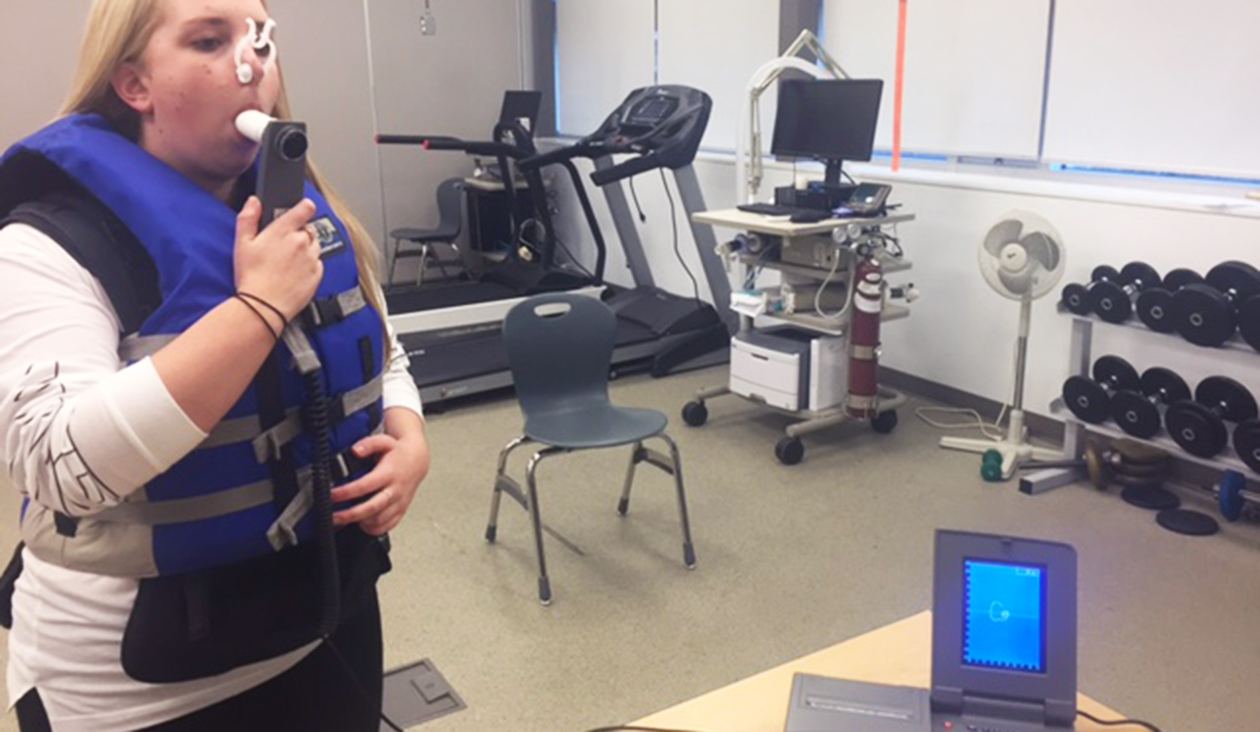Ever wonder how your breathing differs from others around you? Using various test conditions upper year kinesiology students recently examined air flow dynamics and pulmonary function testing and diagnosis.
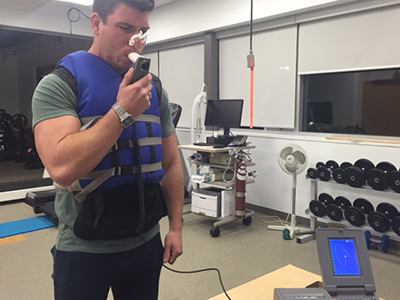 “Pulmonary function tests are non-invasive tests that show how the lungs are functioning,” says Amber Johnston, who is the kinesiology faculty member that teaches the Human Physiology applied lab component of the course.
“Pulmonary function tests are non-invasive tests that show how the lungs are functioning,” says Amber Johnston, who is the kinesiology faculty member that teaches the Human Physiology applied lab component of the course.
“These tests can include looking at pulmonary volumes, flow rates, and even gas exchange.”
The use of testing equipment helps to breakdown these volumes into measures that students are learning about in class — these include but are not limited to measures of tidal volume, inspiratory and expiratory capacity, overall lung capacity, and forced expiratory volume.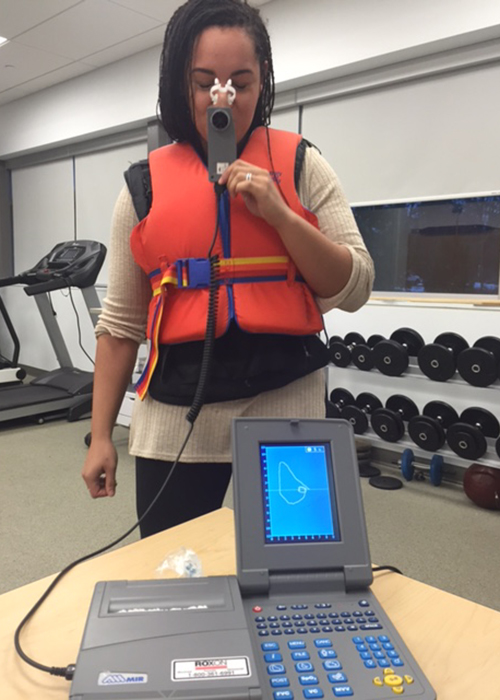
To put it more simply, how efficiently and how much air can you get in and out of your lungs.
In lab, students learn the importance of understanding these diagnostic tools and applying them to disease and the human physiology behind normal function and disease.
To better demonstrate how certain disease can affect individuals, students were put to the task of performing these tests under normal conditions, and then under more ‘confined’ conditions.
Under confined conditions, students wore a 55-60lb weighted vest and were then suited up with tight fitting life jackets to give the perception of a ‘heavy chest’, excess weight/hyper barreling of the chest, and ‘abnormal breathing’.
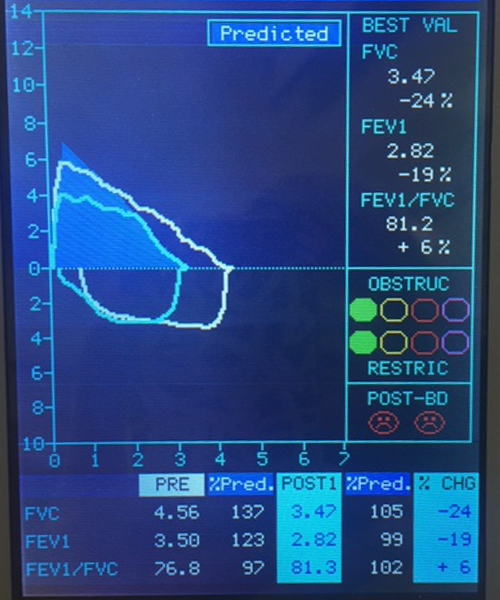 It also helps to demonstrate the obstructions or restrictions in air flow that one would experience with disease, such as Chronic Obstructive Pulmonary Disorder, asthma, or even obesity.
It also helps to demonstrate the obstructions or restrictions in air flow that one would experience with disease, such as Chronic Obstructive Pulmonary Disorder, asthma, or even obesity.
Estimated lung age is one of the predicted measures taken in this test, and when put under these conditions students went from normal function (average age range 20-25) to an estimated lung age ranging from 65-85.
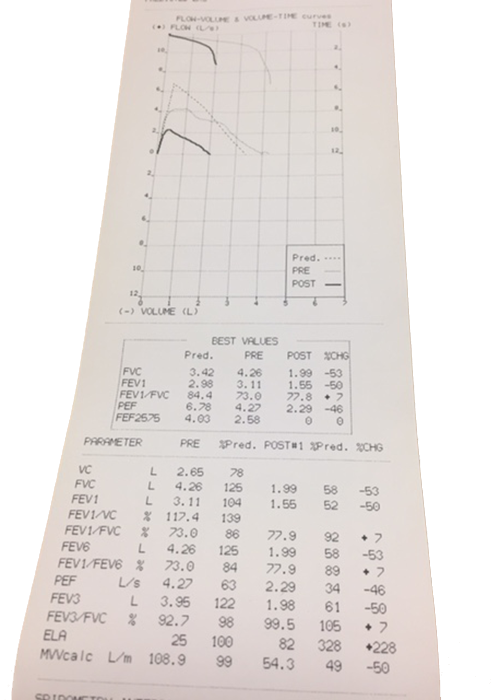 Students were able to better understand the importance of these tests and how we can effectively use breathing exercises, respiratory muscle training, and overall exercise as a way to manage disease and create a better quality of life for individuals who are living with such conditions.
Students were able to better understand the importance of these tests and how we can effectively use breathing exercises, respiratory muscle training, and overall exercise as a way to manage disease and create a better quality of life for individuals who are living with such conditions.

